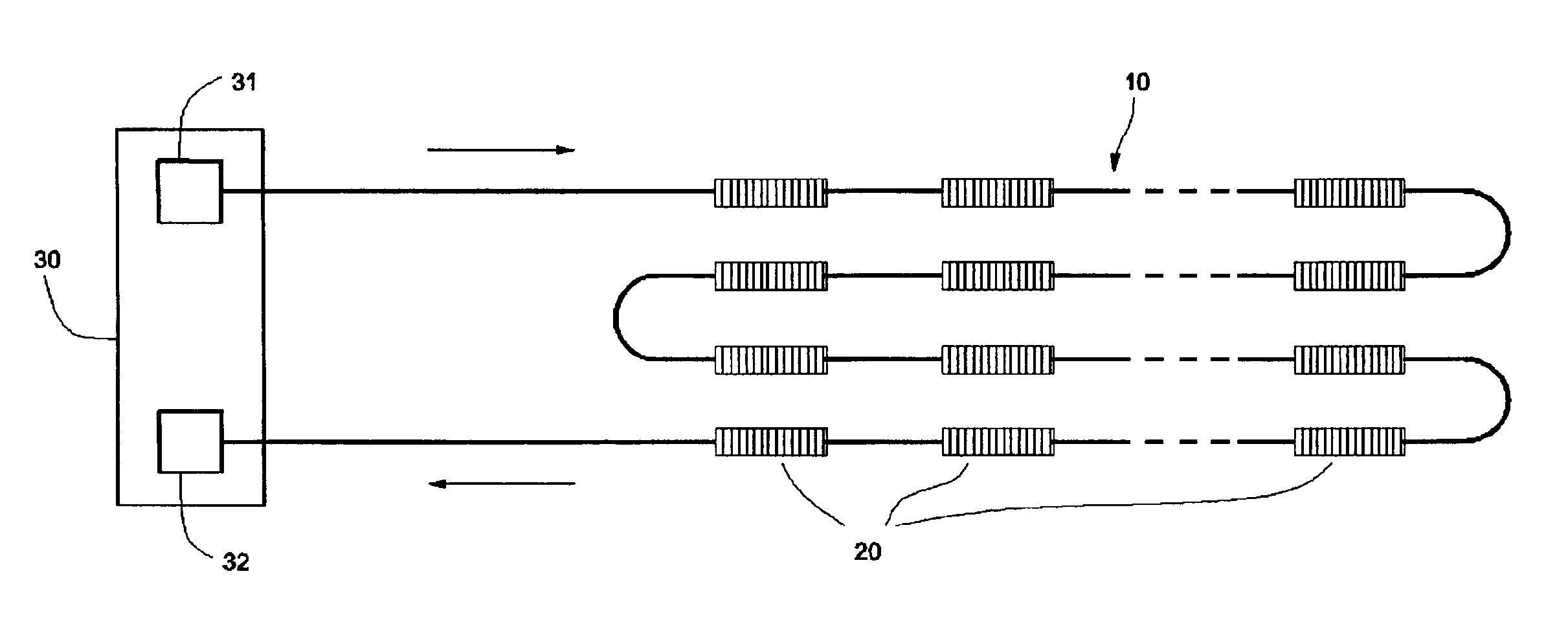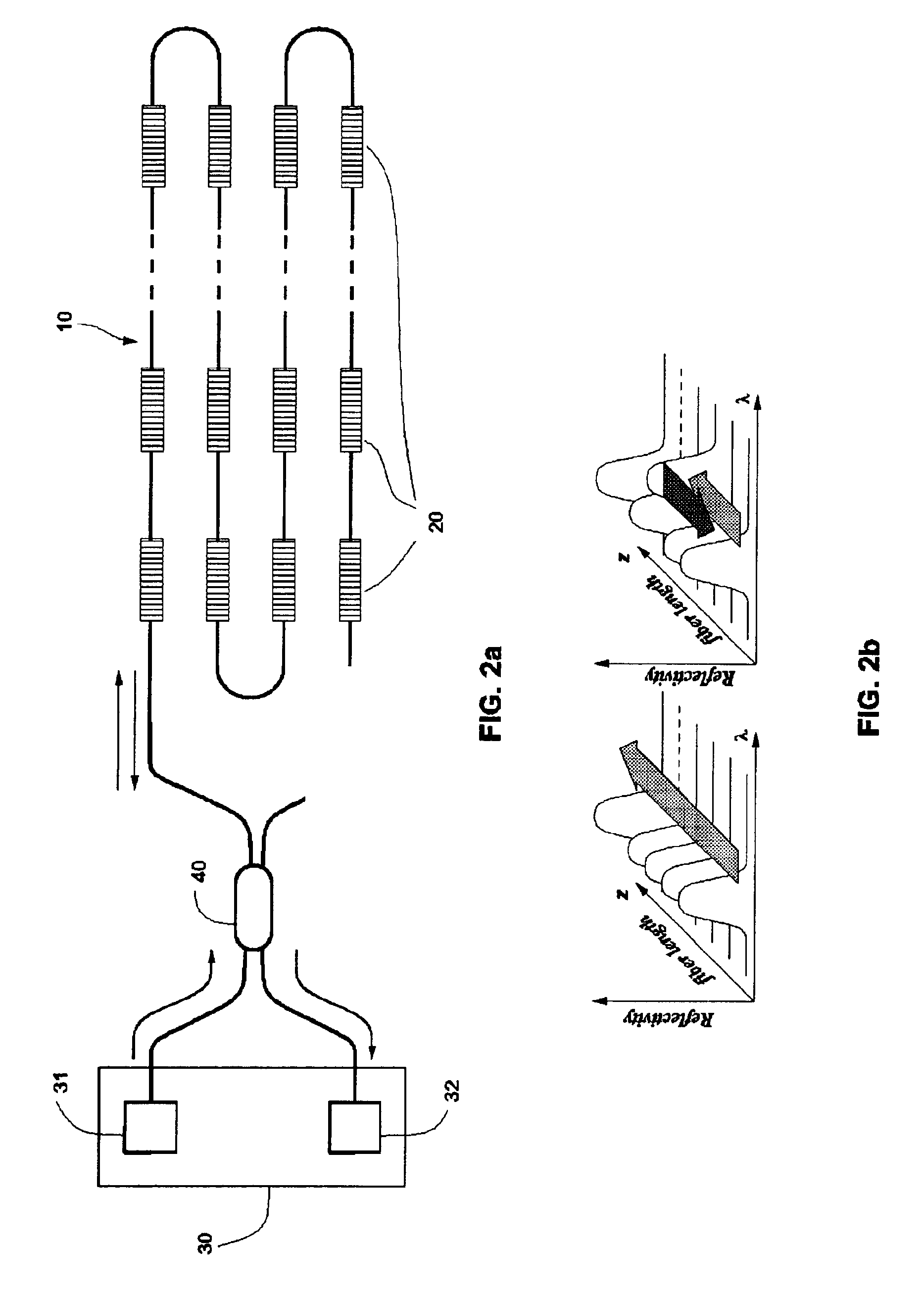Fiber-optic sensing system for distributed detection and localization of alarm conditions
a fiber optic sensor and distributed technology, applied in the field of fiber optic systems, can solve the problems of inability to provide cost effective solutions for widely acceptable applications of distributed fiber optic sensors, inability to fully integrate the in-fiber weakly reflective bragg gratings of the optical fiber sensing network, and failure of physical structures, etc., to achieve the effect of simple and inexpensiv
- Summary
- Abstract
- Description
- Claims
- Application Information
AI Technical Summary
Benefits of technology
Problems solved by technology
Method used
Image
Examples
Embodiment Construction
In the present invention, fiber optic systems based on an array of equal spectrally selective sensing elements, whose characteristic bands can shift under external influence, are described. The spectrally selective sensing elements may be coupled optically with the optical fiber or may be written onto the fiber as fiber Bragg gratings or fiber long period gratings. In normal undisturbed conditions characteristic bands of sensing elements occupy limited wavelength range further called as first wavelength range. The present invention utilizes a light source and optical power detector to monitor transmittance or reflection of the fiber within a wavelength range which further called as second wavelength band and which does not overlap with the first wavelength range. Detected change of fiber transmittance or reflection in the second wavelength range may be used to set off an alarm signal and to perform a localization of the alarm area.
FIG. 1a shows one embodiment of the system disclosed...
PUM
 Login to View More
Login to View More Abstract
Description
Claims
Application Information
 Login to View More
Login to View More - R&D
- Intellectual Property
- Life Sciences
- Materials
- Tech Scout
- Unparalleled Data Quality
- Higher Quality Content
- 60% Fewer Hallucinations
Browse by: Latest US Patents, China's latest patents, Technical Efficacy Thesaurus, Application Domain, Technology Topic, Popular Technical Reports.
© 2025 PatSnap. All rights reserved.Legal|Privacy policy|Modern Slavery Act Transparency Statement|Sitemap|About US| Contact US: help@patsnap.com



